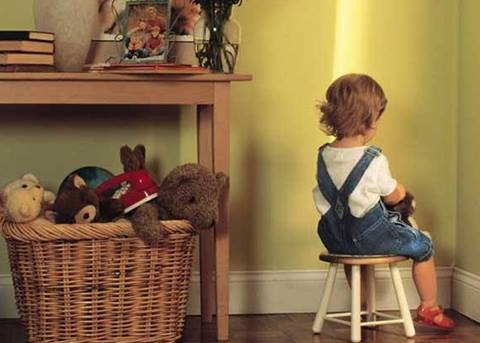The Age-by-Age Guide to Raising a Kid Who Cares
21/06/2017
-O'HANA
-0 Bình luận
It's never too early to teach children to see the significance of giving to people in need.
I REMEMBER the first time my daughter noticed someone who was homeless. She was 4 at the time; we were leaving an airport, and she spotted him sleeping in a cardboard box by the side of the building. She wanted to know if he was making a fort and whether she could ask him to share. It was tempting to tell her that he was just playing. I didn't want her to know that some people don't have a comfortable home with a bed, air-conditioning, and a family. Instead, I decided to parent up: I took a deep breath and told her the man in the box wasn't playing. The box was where he lived.
I expected her to recoil in horror. Instead, she pelted me with questions: Where does he keep his toys? Where are his snacks? Does he have a toothbrush? A mom? A dad? And where does he go to the bathroom? For a short time afterward, my daughter became hyperaware of homelessness. She played "homeless" with her dolls, and at dinner she asked whether homeless people ate broccoli or chicken or whatever else was on her plate. I wish I could say that the next thing I did was show her how to help the homeless. Rather, I answered her questions and let the phase pass. At the time it didn't occur to me that a 4-year-old could do anything to help a homeless person. It's understandable that I wanted the whole episode to blow over so that we could get back to feeling like the world is a safe place, notes George Scarlett, Ph.D., deputy chair in the Eliot-Pearson Department of Child Study and Human Development at Tufts University, in Medford, Massachusetts: "We should help our children feel like there's someone in charge who can keep anything really bad from happening to them," he says. And yet that doesn't mean we should protect them from all of the harsh realities of life. An important part of parenting is about finding the right balance between protection and exposure. These are the best ways to strike that balance at every age—and instill a solid sense of philanthropy in the process.

Up to 18 Months
Coddle: When you care for your young child, you're teaching her to care for others, says Susan Damico, assistant director at the Devereux Center for Resilient Children, in Villanova, Pennsylvania. "When she's hungry, you feed her. When she's scared, you cuddle her. You're showing her how you respond when you see a need," she says. At its core, this is what philanthropy is about.
18 Months to 23 Months
Encourage: Around 18 months, children become aware of the feelings of others. This may not be empathy yet, but they recognize signs of distress. For example, your child may show concern when he hears a baby cry, or he might try to give you some of his snack if you tell him you're hungry. It's important to give encouraging feedback during these times. Thank him if he offers you some of his food, or tell him it's nice that he is worried about the baby who's crying and ask why he thinks the baby is upset.
2 to 3 Years
Show: This is the time when kids' cognitive and language skills develop further. They can identify when people are sad, happy, and angry, and they're able to find similarities between their own feelings and those of others. Through symbolic play they take on different roles and even start to anticipate needs. For instance, your child might act out a scene of a monster attacking a kitten that she may try to rescue. This indicates she's not only concerned about those who need help but is also sorting out how she can help. Now can be an ideal time to talk to her about how good you feel when you help others, and to lead by example. Picture books can also bring meaning to a topic your child might not otherwise grasp. Their characters and plotlines can make an abstract concept, such as cancer, more concrete, linking it to emotion. "Helping a child grasp the idea of philanthropy isn't about telling, telling, telling," explains Dr. Scarlett. "It's showing, showing, showing."
4 to 6 Years
Engage: Somewhere between the ages of 4 and 6 the pieces come together, says Georgia Michalopoulou, Ph.D., chief of staff for child psychiatry and psychology at the Children's Hospital of Michigan in Detroit. Children are capable of imagining what it feels like to be in someone else's situation. "A 5-year-old can relate to what it might be like for another child in the hospital, without his toys, pets, or friends," says Dr. Michalopoulou. Present situations to help your child link feelings to actions: If his friend's cookie falls in the dirt, would it help to share his own cookie? At this age, your child still won't likely be able to comprehend large global issues such as world hunger. He can, however, understand not having enough food to eat. Focusing on the smaller problems within the larger issues will help him decide how to make a difference. Maybe a family without food might like a box of cereal bars or a jar of peanut butter?
7 to Ten Years
Initiate: Kids this age are ready to choose causes and take action, with a little help from their parents. Zero in on your child's interests— cooking, building, drawing—and ask her how she might use her skills to help. If she's stumped, try Volunteer Match.org, which connects your child's interests to projects in your area. (Want to join your child in her efforts? Find family opportunities at DoingGood Together.org or at BigHeartedFamilies.org.) This type of emotional attachment to a cause and concrete action can have a lasting effect on your kids, says Dr. Scarlett. "Life is most valuable when we care for others and are cared for by others," he says. "You're helping them give meaning to their own life."











